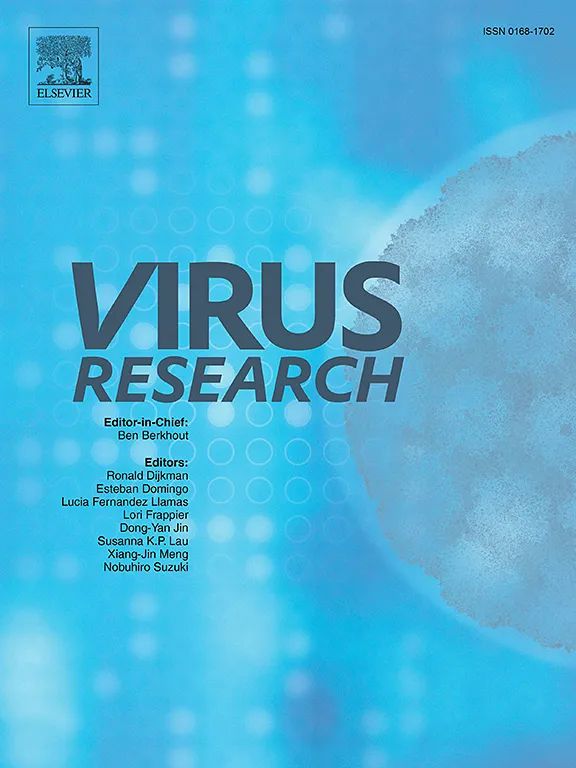针对耐多药肺炎克雷伯氏菌的新型噬菌体pK3-24的特征及其对鼠胆幼虫的疗效。
IF 2.5
4区 医学
Q3 VIROLOGY
引用次数: 0
摘要
肺炎克雷伯氏菌是一种常见的条件致病菌,通常具有耐多药表型,导致抗生素治疗失败。因此,它可能诱发严重疾病,包括社区获得性肺炎和血流感染。作为抗生素的新兴替代品,噬菌体被认为是解决耐药细菌感染问题的关键。在这里,我们报告了一种主要针对 ST447 肺炎克氏菌的新型噬菌体 pK3-24。pK3-24 是一种类似 T7 的短尾噬菌体,具有快速吸附能力,能在细菌草坪上形成带晕的半透明斑块。最佳感染倍数(MOI)为 0.01,平均迸发量为 50 PFU/mL。pK3-24 噬菌体具有环境稳定性,可在低于 50 °C 和 pH 值为 6-10 的环境中存活。它的双链 DNA 基因组为 40,327 bp,不携带抗生素抗性、毒力或溶菌基因。系统进化分析将 pK3-24 噬菌体归入 Przondovirus 属,成为一个新物种。pK3-24 噬菌体能抑制生物膜的产生。此外,以 MOI > 1 的剂量使用 pK3-24 能有效降低感染 ST447 肺炎双球菌的 Galleria mellonella 幼虫的死亡率。本文章由计算机程序翻译,如有差异,请以英文原文为准。
Characterization of novel phage pK3–24 targeting multidrug-resistant Klebsiella pneumoniae and its therapeutic efficacy in Galleria mellonella larvae
Klebsiella pneumoniae is a common, conditionally pathogenic bacterium that often has a multidrug-resistant phenotype, leading to failure of antibiotic therapies. It can therefore induce serious diseases, including community-acquired pneumonia and bloodstream infections. As an emerging alternative to antibiotics, phages are considered key to solving the problem of drug-resistant bacterial infections. Here, we report a novel phage, pK3–24, that mainly targets ST447 K. pneumoniae. Phage pK3–24 is a T7-like short-tailed phage with a fast adsorption capacity that forms translucent plaques with halos on bacterial lawns. The optimal multiplicity of infection (MOI) is 0.01, and the average burst size is 50 PFU/mL. Phage pK3–24 shows environmental stability, surviving at below 50 °C and at pH values of 6–10. It has a double-stranded DNA genome of 40,327 bp and carries no antibiotic-resistance, virulence, or lysogeny genes. Phylogenetic analysis assigned phage pK3–24 to the genus Przondovirus as a new species. Phage pK3–24 inhibited the production of biofilm. Moreover, treatment with pK3–24 at doses with an MOI > 1 effectively reduced the mortality of Galleria mellonella larvae infected with ST447 K. pneumoniae.
求助全文
通过发布文献求助,成功后即可免费获取论文全文。
去求助
来源期刊

Virus research
医学-病毒学
CiteScore
9.50
自引率
2.00%
发文量
239
审稿时长
43 days
期刊介绍:
Virus Research provides a means of fast publication for original papers on fundamental research in virology. Contributions on new developments concerning virus structure, replication, pathogenesis and evolution are encouraged. These include reports describing virus morphology, the function and antigenic analysis of virus structural components, virus genome structure and expression, analysis on virus replication processes, virus evolution in connection with antiviral interventions, effects of viruses on their host cells, particularly on the immune system, and the pathogenesis of virus infections, including oncogene activation and transduction.
 求助内容:
求助内容: 应助结果提醒方式:
应助结果提醒方式:


